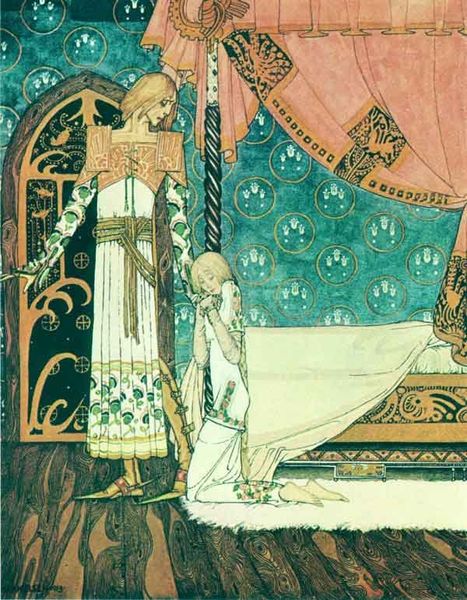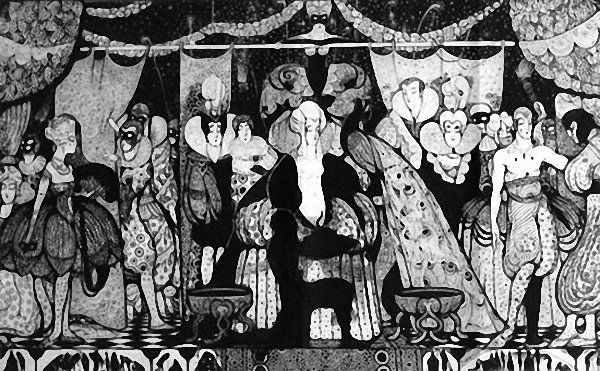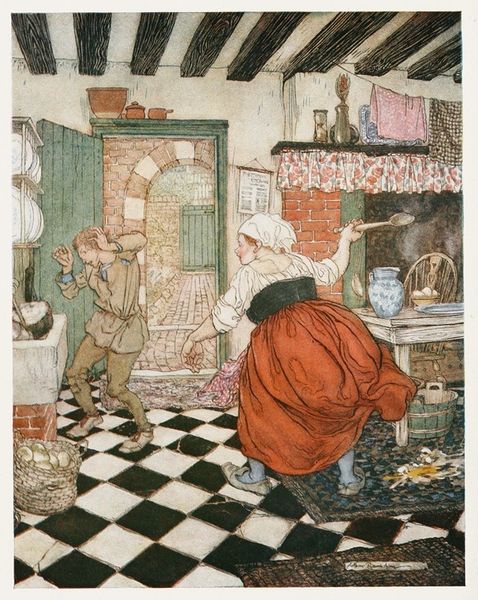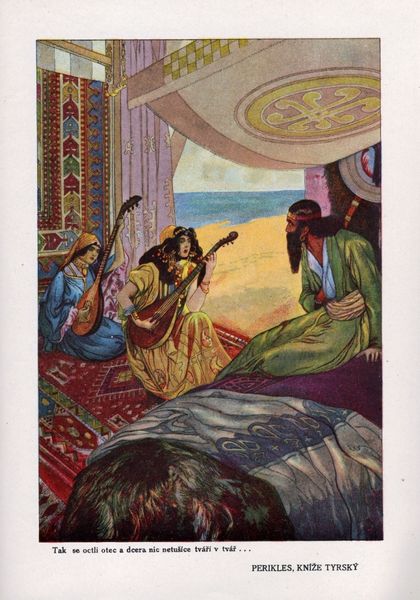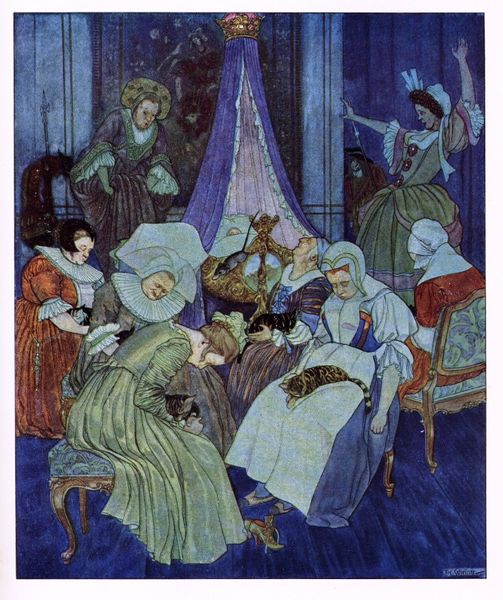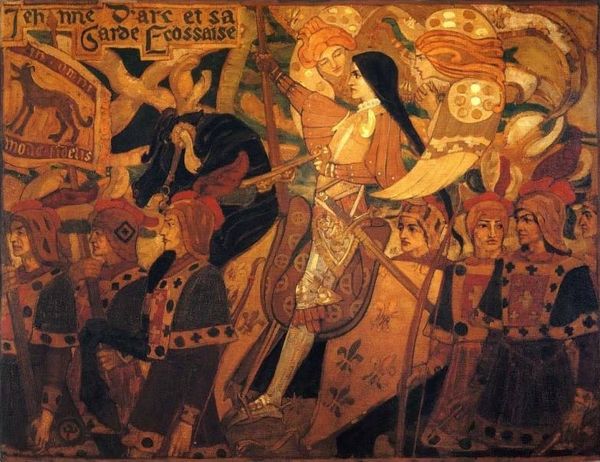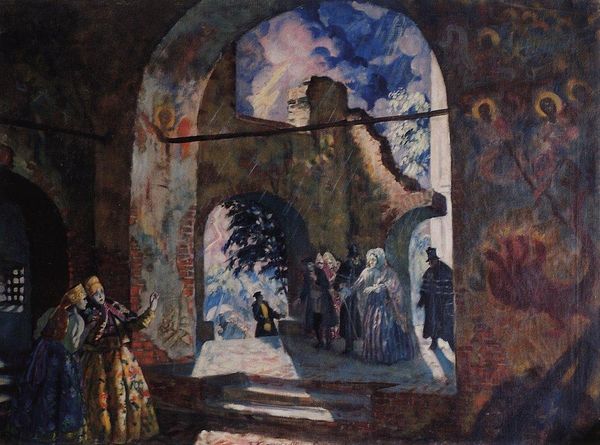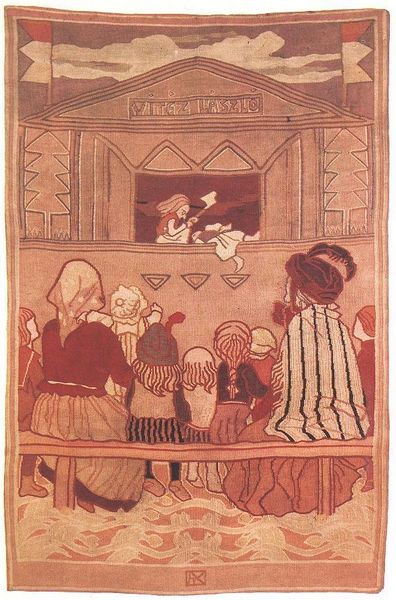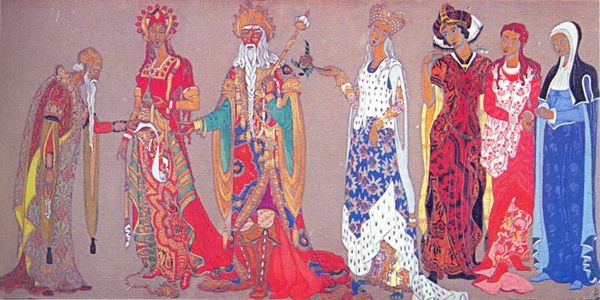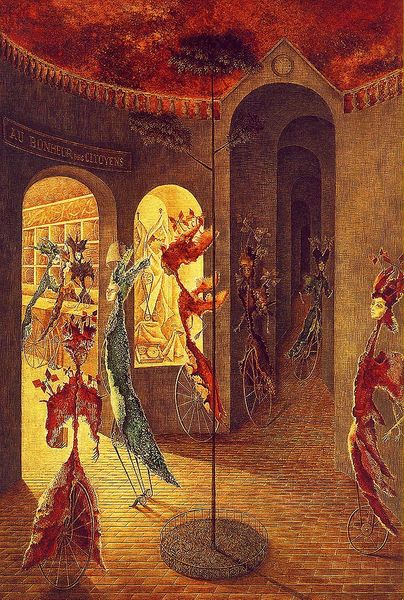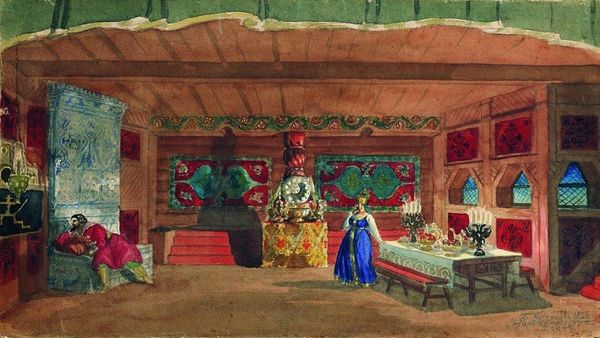
tempera, painting
#
medieval
#
narrative-art
#
tempera
#
painting
#
perspective
#
figuration
#
naive art
#
genre-painting
#
history-painting
#
miniature
Copyright: Mstislav Dobuzhinsky,Fair Use
Editor: This tempera painting is entitled "The Game of Robin and Marion" by Mstislav Dobuzhinsky. The flattened perspective and bright colours give it such a fairytale feel. How do you interpret this work? Curator: Well, let's consider what "fairytale" signifies, and for whom. Dobuzhinsky's work, even when seemingly drawing on medieval aesthetics, is always in conversation with the societal anxieties of his own time, primarily the early 20th century. The 'game' itself, presented in such a theatrical setting, isn't merely playful. It subtly questions performative gender roles. Editor: Performative roles? Curator: Absolutely. Consider Marion. She’s presented almost as a passive figure, watched, while Robin orchestrates action around her. Doesn't this dynamic reflect, even subtly, power imbalances prevalent in early 20th-century society? Also, the deliberate 'naivety' of the style critiques academic art traditions of his time. Editor: So the medieval setting isn’t just aesthetic, it’s also a comment on historical power dynamics? Curator: Precisely. The historical setting allows him to subtly explore contemporary issues like class structures and prescribed social behaviours, and invite viewers to think critically about them. It uses history as a mirror reflecting modern societal challenges, right? What did you notice regarding color? Editor: The vibrant color and almost deliberately 'off' perspective really struck me, they seem to contribute to that sense of unease or perhaps… satirical commentary you pointed out. Curator: Exactly. Dobuzhinsky uses these visual cues to disrupt expectations. His seemingly whimsical style cleverly camouflages social critique. This makes it interesting from today's perspective as we examine questions of historical and ongoing marginalization, do you think? Editor: Definitely! I see how considering the historical context and the artist's own time period adds a whole new layer of meaning to the work. Thank you!
Comments
No comments
Be the first to comment and join the conversation on the ultimate creative platform.
